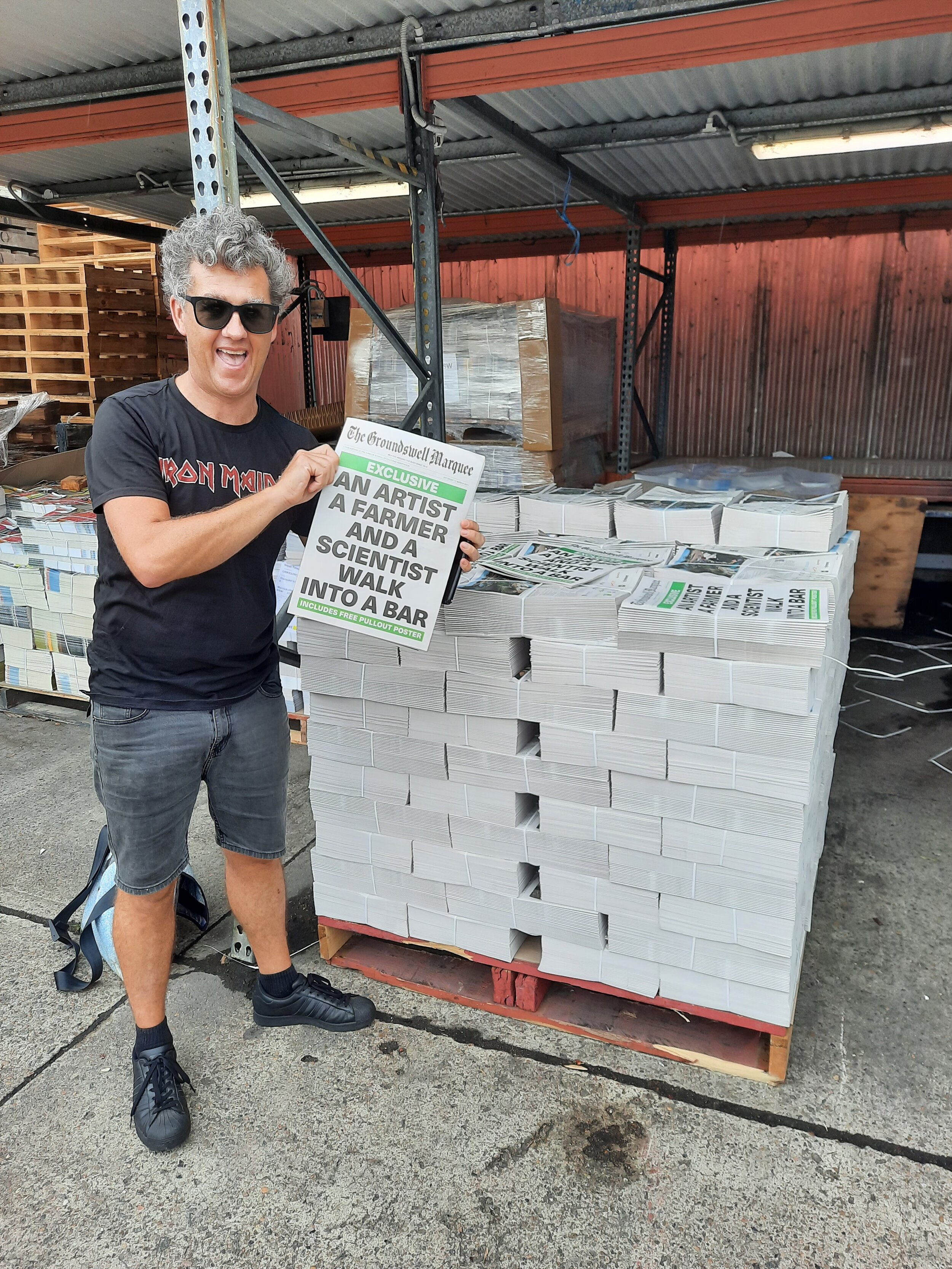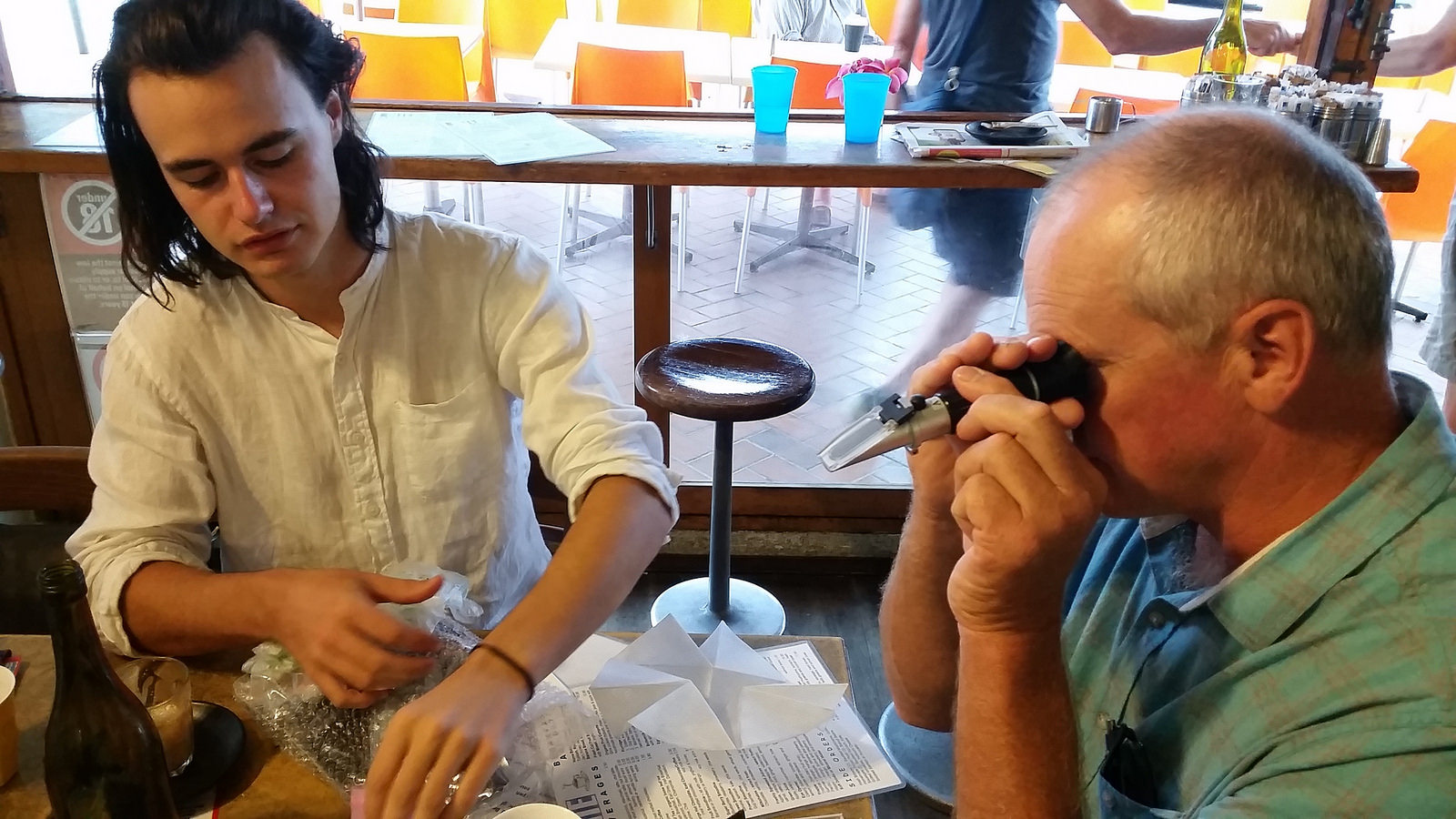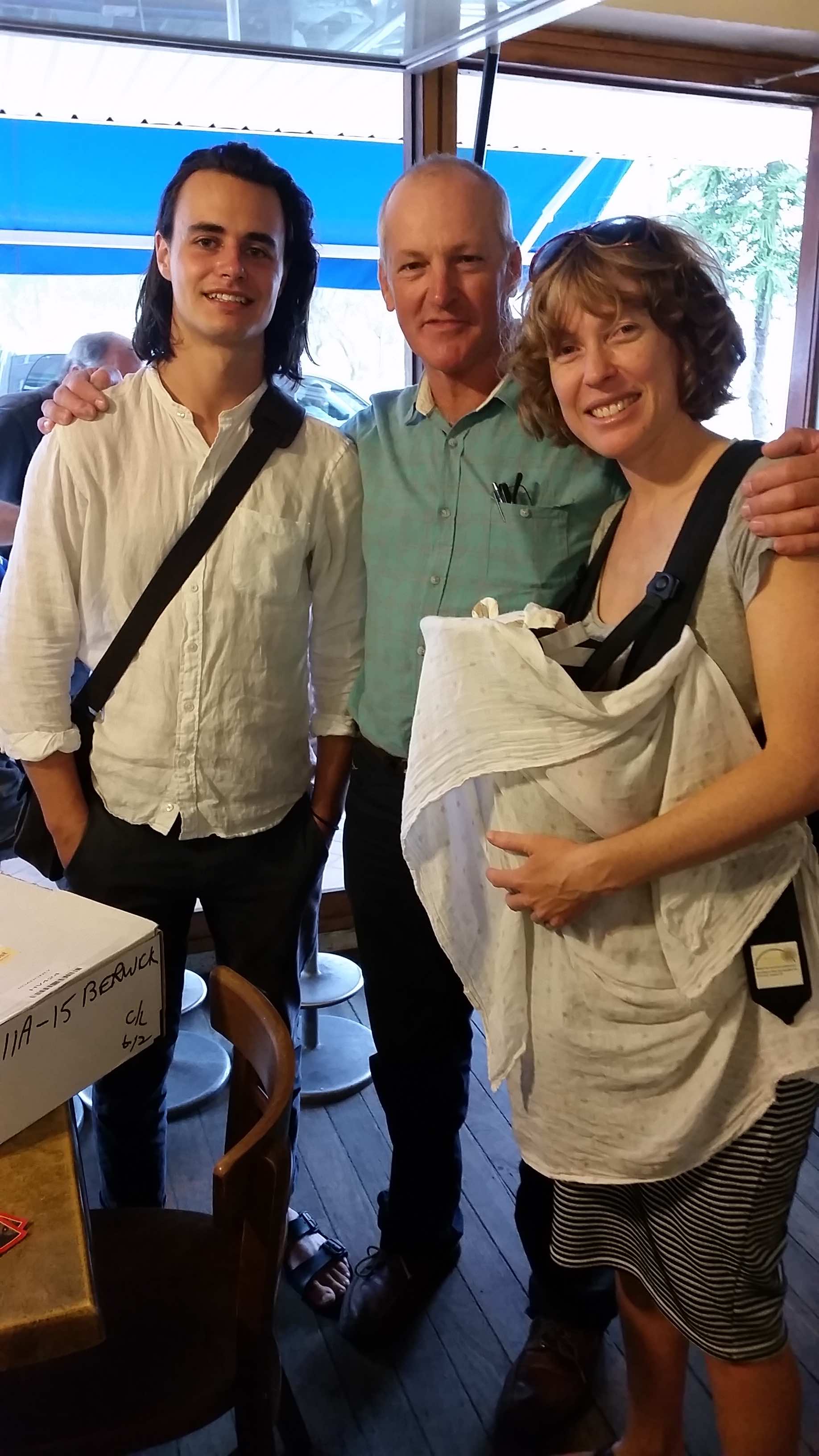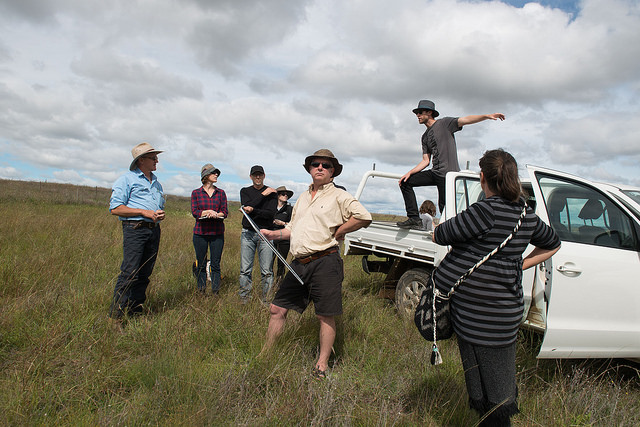It’s 56 pages long, raw and wriggling, and it has a free pull-out poster. We have finally published the newspaper that tells the story of ‘An artist, a farmer and a scientist walk into a bar’, and we’d love to share it with you.
humus:human - the video
The humus house at Groundswell and Cementa
Humus: its Chemical, Physical and Biological properties that are essential for life
Humus:Human at Lyttleton Stores
The soil architects
humus:human at Siteworks in Bundanon
Did you just say "gel matrix" ???
An immersive model for humus:human?
By Laura Fisher
The more Glenn and I talked about humus, the more I felt like we needed another artist in the mix to tackle this behemoth topic with us. Enter Jono Bolitho!
Glenn speaks a lot about four interdependent cycles that are going on in humus: the water cycle, the nutrient cycle, the carbon cycle, and the nitrogen cycle. These cycles are engines of change: they transfer things, exchange things, synthesise things. They distribute the resources and energy that make plants grow, cool the ground, and make it rain.
Thinking about these cycles invites a kind of engineering imagination. Might we create a whole range of mechanical scenarios: 3-dimensional windows into the world in the soil that can be pumped, cranked, blown into? Little dioramas that get activated like music boxes or cuckoo clocks?
Then we began thinking spatially and architecturally. What if the interactive elements could be more encompassing? What if we could embed the person within the processes we want to illuminate?
This is when the concept of an immersive model really hit us. It's appealing as an idea because a model can be both illustrative and interactive, and because it feels like an exciting way to work at the intersection of art and science. Glenn also likes the educational dimension, as that’s one of the primary reasons he's working with us.
A Jono sketch
Models are usually about representing something in miniature: the Titanic, the solar system. For us, it’s the opposite. We’ll be scaling up and trying to give physical form to processes that are invisible to the naked eye. This is why thinking about the final outcome as an installation or a pavilion – a human-scaled environment - is so exciting, daunting as it is.
It makes me think of fungi wizard Paul Stamets’ description of a soil organism’s view of its environment: ‘you would be enmeshed in a carnival of activity, with mycelium constantly moving through subterranean landscapes like cellular waves, through dancing bacteria and swimming protozoa with nematodes racing like whales through a microscopic sea of life’.
What is humus?
by Laura Fisher
This is the first blog post for the collaborative project humus:human, which involves myself, artist Jono Bolitho, and farmer Glenn Morris.
How did this project come about? In 2017, members of KSCA visited Billabong, the organic grazing property Glenn manages in Inverell. We knew Glenn because he had attended Futurelands2, and also because he was a bit famous for riding his horse Hombre across the Sydney Harbour Bridge in protest against NSW land clearing laws (see here and here).
At Billabong we were hosted to a beautiful lunch with his wife Katrina, which featured Glenn’s own organic produce, and toured around to meet his very happy cows and pigs, and learnt about the work he’d done to regenerate the property. It was an amazing experience for all of us, and helped us understand what ‘regenerative agriculture’ really looks like in practice.
Glenn talked passionately about humus, and about how it was key to the regenerative work he’d done. Eloise wrote a little blog post about this here.
I knew nothing about humus, and started to look into it - Glenn gave me some advice on what to read. He had done extensive research during his Masters in Sustainable Agriculture, and told me the best writing on humus came from soil science that predates the mass take-up of industrial farming methods that rely upon synthetic fertilisers and pesticides (which is most agriculture today).
So I read bits and pieces of writing by people like Selman Waksman, the pioneering microbiologist and biochemist. In his 1936 book Humus: Origin, Chemical Composition and Importance in Nature, he writes that humus ‘probably represents the most important source of human wealth on the planet. Nature has stored… a vast amount of readily available energy, a large part of the carbon needed for life processes, and most of the combined nitrogen, so much needed for plant growth’.
The crux of it seems to be that in healthy soils, humus is both produced by, and a kind of infrastructure for, a whole universe of microorganisms that are circulating minerals and nutrients among themselves, as well as oxygen and water molecules, as well as various bio-chemical reactions and so on. The starting point for understanding humus is photosynthesis, the process by which plants convert carbon in the atmosphere - the sun's energy - into food. They use this food to build their bodies both above and below ground, but they ALSO pump a lot of it into the soil via their roots, where it is traded with microorganisms for other nutrients that the plant needs. So the carbon becomes a kind of chemical energy that fuels the fertility of soil.
Which is not to say that I now feel I understand humus. The wikipedia entry on it is oddly reassuring on this front:
“It is difficult to define humus precisely because it is a very complex substance which is not fully understood. Humus is different from decomposing soil organic matter. The latter looks rough and has visible remains of the original plant or animal matter. Fully humified humus, on the contrary, has a uniformly dark, spongy, and jelly-like appearance, and is amorphous; it may gradually decompose over several years or persist for millennia. It has no determinate shape, structure, or quality. However, when examined under a microscope, humus may reveal tiny plant, animal, or microbial remains that have been mechanically, but not chemically, degraded. This suggests an ambiguous boundary between humus and soil organic matter. While distinct, humus is an integral part of soil organic matter.”
There's something very appealing about diving into a topic that an expert community agrees "is not fully understood". Time to bring in the artists I say! Glenn, unlike the rest of us, seems not to be confused about humus. Last year I asked him to define it for me, and I'm so glad I recorded our conversation. He held an imaginary handful of it, feeling its texture and said this:
“So we’ve got the organic matter breaking down, the lignin material, we’ve got the organic compounds, the sugars coming through the root system, we’ve got all sorts of other soil life breaking down, dying, reproducing, the microbes, the fungus, the sugars, so the whole lot is interacting, and then, they’re bonding with the cations in the soil, so you get a bridging effect between the humus and the clay particles in the soil, so all of this is forming what we call stable humus. It’s a very complex situation.”
Yes. It sounds like a very complex situation indeed.
The transformation of Billabong


























